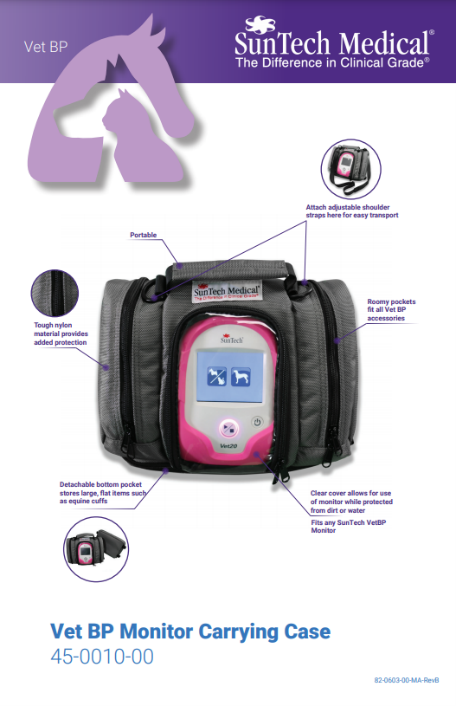![]()
Blog @ SunTech
Advice from the BP Measurement Experts
New Measures for Blood Pressure and Cardiovascular Health

Gone are the days where your cardiovascular health could be summed up in two numbers. Systolic and diastolic blood pressure, measured at the brachial artery, were the key tools for staving off heart attack, stroke and other cardiovascular disease (CVD). Have a BP of under 140/90? Great! You are going to live a long and healthy life. Over 140/90? Time to watch your salt and medicate away. While lowering BP in hypertensive patients has been proven to be an effective intervention, it may not be so simple any more. Research, such as the SPRINT study, are finding benefits for managing BP in pre-hypertensive patients. With that, a new series of indices and measurements are offering more tools for doctors to measure and treat hypertension.
Some of these measurements made possible by new technology are showing a correlation to CVD risk and provide effective treatment plans to manage patients. Others have more limited data available to provide information on utility. We looked at research published in the Hypertension journal from the American Heart Association (AHA) for a detailed take on these measures:
Dipper/non-Dipper
Data from 24-hour ambulatory blood pressure monitoring (ABPM) has been shown to be an effective tool in blood pressure treatment and it is increasingly being used in hypertension management around the world [1]. ABPM uniquely provides nocturnal data – a measure that is proving to be a useful predictor of cardiovascular disease risk [2].
Dipping refers to the level of nocturnal (asleep) BP compared to daytime (awake) BP. Normal dipping in BP of 10% or greater is expected during sleep. If this does not happen, then the patient is a non-dipper. In patients with normal daytime BP, non-dipping is associated with a far greater risk of mortality – almost twice that of dippers [2].
Although the American Diabetes association now recommends that hypertensive medication be prescribed at bedtime [3], the AHA considers the evidence for recommending the treatment of dippers to be currently inadequate.
Central Blood Pressure
Blood pressure is not a constant force throughout the body, with blood pressure taken at the arm on the brachial artery not necessarily reflecting the blood pressure throughout the center of the body and at the aorta. While brachial BP measurement has a proven history, central BP measurement is being seen a new tool to better manage hypertension.
Overall central blood pressure is beginning to show promise as a tool in the treatment of hypertension. Treatments that directly manage central BP have been linked to better outcomes for patients while also reducing the medication dose required for effective treatment [4].
Pulse Wave Velocity (or Arterial Stiffness)
Arterial stiffness has been known as a measure of cardiovascular health for some decades, although measuring without invasive methods was not possible until Pulse Wave Velocity (PWV) was developed as direct indicator of arterial stiffness. PWV is the speed in meters per second that blood pressure waves move through your circulatory system and is directly influenced by the stiffness of arteries along the measured pathway [5].
Pulse Wave Velocity has been shown across many studies to provide a good indicator of arterial stiffness, however, this is limited to direct measurements taken at the femoral and carotid artery. The AHA does not recommend the use of devices that algorithmically determine PWV through brachial measurements [5]. Other research into the IEM Mobil-o-graph estimations of PWV has shown that algorithms that rely on brachial measurements use age and systolic BP as an overwhelming determinant of PWV and offer little clinical value [6] [7].
Augmentation Index and Pressure
Augmentation Pressure (AP) and Augmentation Index (AIx) are calculations derived from non-invasive brachial blood pressure measurement through analysis of the brachial blood pressure waveform. The measures provide indirect information on arterial stiffness and peripheral wave reflection [5].
Augmentation Index has been shown to predict adverse cardiovascular events, especially in patients with a history of previous events [8]. The AHA recommends further research into Augmentation Index and Augmentation Pressure and understanding the correlation between AIx, AP and Arterial Stiffness [5].
For questions on ABPM contact Alex Forward at This email address is being protected from spambots. You need JavaScript enabled to view it.
Resources:
- [1] G. P. G. S. Eoin O’Brien, "Ambulatory Blood Pressure Measurement," Hypertension, vol. 62, no. 6, pp. 988-994, 2013.
- [2] J. D. K. D. B.-I. J. M. L. B.-A. M. B. Iddo Z. Ben-Dov, "Predictors of All-Cause Mortality in Clinical Ambulatory Monitoring," Hypertension, vol. 49, no. 6, pp. 1235-1241, 2007.
- [3] A. D. Association, "Standards of medical care in diabetes," Diabetes Care, vol. 36, no. 1, p. S11–S66, 2013.
- [4] A. Avolio, "Central Aortic Blood Pressure and Management of Hypertension," Hypertension, vol. 62, no. 6, pp. 1005-1007, 2013.
- [5] W. I. S. E. A. A. C. J. C. J. H. K. L. E. M. C. M. G. N. S. N. W. U. E. W. T. Townsend RR and A. H. A. C. o. Hypertension., "Recommendations for Improving and Standardizing Vascular Research on Arterial Stiffness: A Scientific Statement From the American Heart Association," Hypertension, vol. 66, no. 3, pp. 698-722, 2015.
- [6] T. &. K. S. &. J. O. P. &. I. J. Hussain, "Poster: Dependence of mobil-o-graph Pulse Wave Velocity on AGE and 24-hour ambulatory SYSTOLIC Blood Pressure," American Society Hypertension, 2014.
- [7] T. H. P. J. O. J. L. I. Sameh Basta, "Dependence of ambulatory oscillometric brachial pulse wave velocity," Journal of the American Society of Hypertension, vol. 8, no. 4s, pp. e35-e43, 2014.
- [8] J. P. Z. S. C. A. V. A. S. H. J. W. G. P. A. J. M. Julio A. Chirinos, "Aortic Pressure Augmentation Predicts Adverse Cardiovascular Events in Patients With Established Coronary Artery Disease," Hypertension, vol. 45, no. 5, pp. 980-985, 2005.
Interested in getting more SunTech news, product info, as well as
tips, tricks, and insights from BP experts?
Sign up to get fresh content delivered direct to your inbox.


